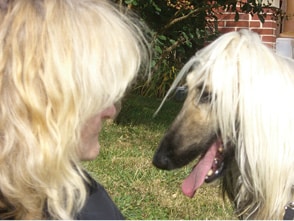There has been a lot of talk for a few years now about the decrease in show entries. In the beginning and for many years following, it was blamed on “the economy.” Then it became “the price of gas,” but it was not. It was directly related to the number of dogs registered with AKC and the number of shows in which they could be entered.
A friend in Montana was commenting on this the other day, that entries that once produced majors have declined to a single entry, if that, and there are NO exhibitors travelling in from other states. Why should they, when they can now find majors in their hometown or state? The point scale was changed every year, requiring fewer dogs and bitches for points or a major. Exhibitors no longer needed to drive or fly across state lines to finish a dog.
…entries that once produced majors have declined to a single entry, if that, and there are NO exhibitors travelling in from other states.
I lived in an area several years ago where it was necessary to take two of your own dogs or bitches to win a single point, then travel to another state or ship them out to a handler for majors. Majors were still to be had, still in double digits, usually when there was a specialty weekend and/or if exhibitors worked together to get an entry.
I remember when a friend flew up from Florida; she wanted to go to a dog show with me as she had never attended one. There was one in an adjacent state, so I entered two of my own females and said she could show one of them for fun and experience. It was a beautiful area in the mountains of West Virginia, where I would have taken her as a visiting tourist anyway. Entries needed for majors were still in double digits, but in that area, there would likely have been none!
When the judging schedule arrived in the post, I was shocked! There was an entry of 13–11, plus mine. When we arrived and I picked up a catalog, people had driven in from four different states. There were no in-state exhibitors. Yes, the major had been “made” with the idea that specific entries could finish their championships, but AKC recorded it as an entry in that Division, without knowing the reason why.
AKC has now shown concern for low entry breeds, but is this going to solve the overall problem of too many shows and too few dogs? Remember, Bo Bengtson wrote about this 20 years ago, comparing the number of AKC registrations, which had halved, with the number of shows that had doubled. How does AKC plan to encourage higher entries in those specific breeds? How will that help any of the shows?
Let’s say the list comprises 10 breeds and each one adds four (minimum for a major) dogs, that would add a few entries to a show that formerly would draw several hundred or a thousand, but which now faces cancellation since entries have dropped to a critical level. Allow two shows a day—with the same dogs but different judges. Does that really help solve the root of the problem?
It is a multifaceted problem. We have already established that the number of dogs registered has decreased, but why has the number being shown decreased so drastically? First of all, in order to be shown in the US, a dog must be AKC registered, and up until the introduction of limited registration, circa 1989, every puppy registered could have been shown. Limited registration was proposed as the way to eliminate overpopulation and bad breeding, but sometimes you don’t need to squash a fly with a footballer’s boot.
Limited registration was embraced by the dog show community as proof of being a responsible breeder, along with requiring spay/neuter contracts. Thousands of puppies across all breeds were then denied the chance of being shown, while their owners had no opportunity to become future exhibitors. Yes, they could still compete in Performance Events but could not be shown in Conformation.
We forget, and newer fanciers may not know, that many top breeders started out showing their pets. I know they did in my breed. Our breed magazines included interviews with highly successful and known breeders, many of whom started out this way. If the puppy happened to be a good one and the owner started winning with him or her, they would continue and become a regular exhibitor. If not, they may have decided never to show again or they may have decided to buy another puppy from somebody they had met at one of the shows. That was how some distinct bloodlines were developed. Owners with related puppies would become friends and discuss their future breeding plans with each other. People today talk about the loss of bloodlines and reminisce about the way it used to be, but in the less popular breeds, breeders and exhibitors may be scattered across the country.
The next hurdle is getting them past the veterinary hurdle. Too many veterinarians have been pressuring people to spay and neuter their puppies as young as five months old, for more than 25 years. I remember selling a beautiful puppy to a family that thought it would be great fun to show him. When he was about seven or eight months old, there was a dog show coming up in their neighborhood. I called on the phone to say that there will be a dog show near them soon. He had already been neutered. “The vet said if we didn’t, he would die of cancer!” That was the warning given to so many well-meaning people who were responsible owners and could have been exhibitors and even responsible breeders.
I wish AKC had adopted a system similar to the one in Canada. All puppies by Canadian law have to be registered by the breeder, and registration papers have to be supplied to the new owner. The breeder has the option of using a non-breeding contract registered with the Canadian Kennel Club. The difference between the non-breeding contract and limited registration is that the dog could, in fact, still be shown, but no progeny could be registered unless the contract is revoked. Breeders could utilize this tool, enforcing their contractual agreements regarding health testing or gaining a title.
I wish AKC had adopted a system similar to the one in Canada. All puppies by Canadian law have to be registered by the breeder, and registration papers have to be supplied to the new owner. The breeder has the option of using a non-breeding contract registered with the Canadian Kennel Club.
Even the talk that is constantly seen on social media, that dog shows are for the evaluation of breeding stock, can discourage an owner who enjoys showing but has no intention to breed. Dog shows started as a competition, not to have one man’s dogs evaluated by another. It was so that they could show their dogs against each other, hoping to be the winner. It was a competition from the beginning, nearly 200 years ago.
This has, in fact, become the “perfect storm” with so many factors affecting breeders, owners, and vendors. It has been disastrous to many show-giving clubs, and it has been several years in the making. It will need study and discussion; a situation of this magnitude cannot be fixed overnight. It will need cooperation between breeders, exhibitors, including both owners and professional handlers, show superintendents, and the AKC. Can this be accomplished? It COULD be, but whether it can, or will, has yet to be determined.









